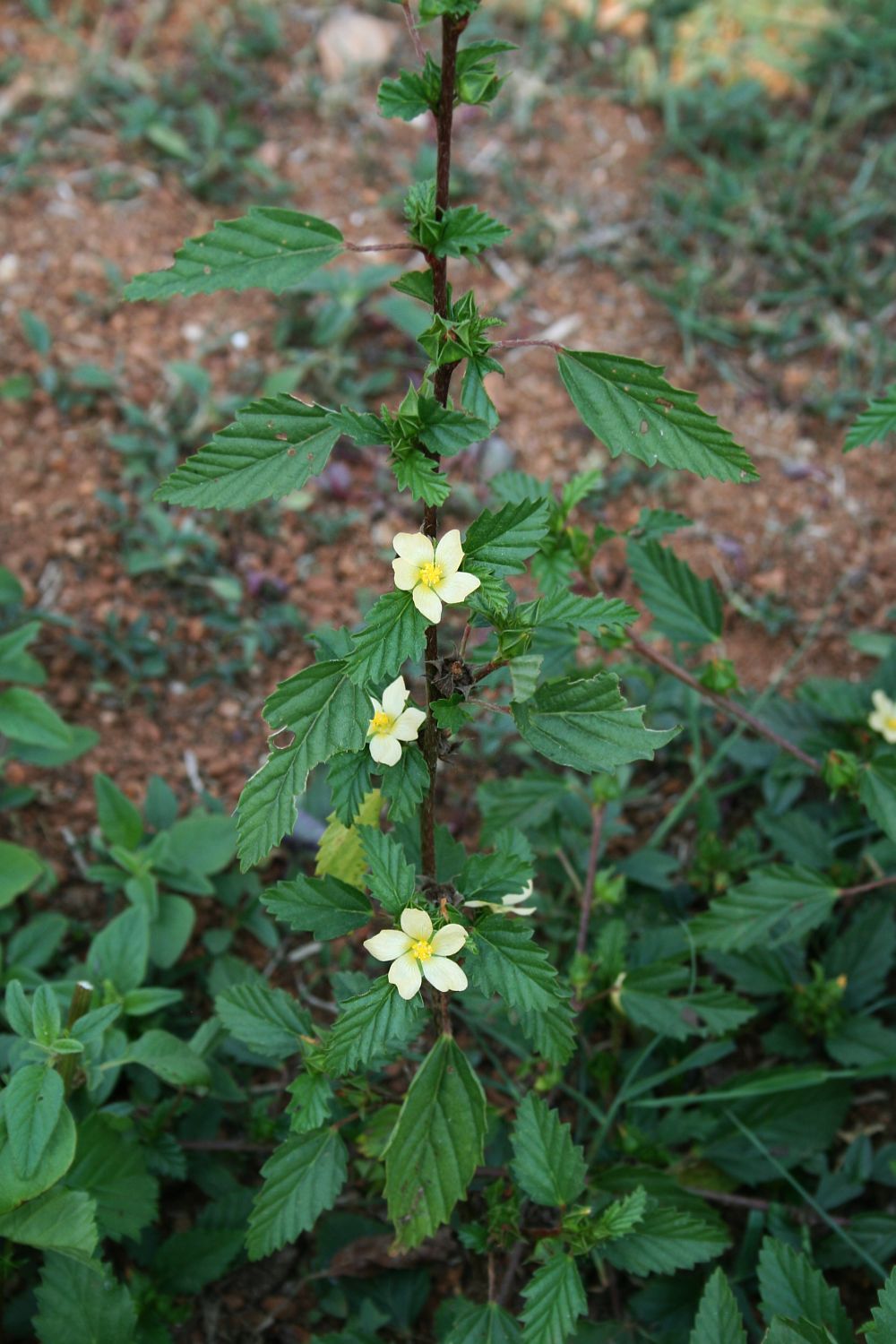Exploring Yellowstem Bushmallow
Scientifically recognized as Malvastrum coromandelianum and classified under Malvaceae, stands out as a distinctive Herbaceous perennial known for its unique characteristics. While it may also be found under other Synonyms, Malvastrum coromandelianum var. erectum.withNone widely recognized form. You can use our free plant care app PlantPlants to identify Yellowstem Bushmallow.
Temperature
50 F 100 F (10 C 38 C)
Watering
Moderate; tolerates drought once established
Fertilizing
Balanced slow-release fertilizer
Sunlight
Full sun to partial shade
Toxicity
Not known to be toxic



Appearance and Growth Of Yellowstem Bushmallow
At maturity, this species reaches approximately 1-3 feet tall, presenting Alternate, broad, and lobed leaves with a velvety texture along with Yellow to orange flowers with five petals, blooming primarily in the summer, followed by Capsule fruit containing several seeds. These features are supported by a reliable Fibrous root system, ensuring stability and sustained growth.
Yellowstem Bushmallow Origin and Habitat
Native to Native to tropical regions including parts of Africa and Asia, Yellowstem Bushmallow thrives in Typically found in disturbed areas, roadsides, and open fields at elevations around Sea level to 3000 feet. Best suited for USDA Hardiness Zone Zones 9-11. Whether grown indoor, in a curated garden or a more natural setting, its ecological requirements help maintain its vigor over time.



How to take Care of Yellowstem Bushmallow
Light, Soil and Watering Yellowstem Bushmallow.
You can use our free plant identify app PlantPlants to chose the best spot for Yellowstem Bushmallow, This plant prefers Full sun to partial shade and flourishes in Well-drained sandy or loamy soil with a soil pH of about 5.5 7.0.
Yellowstem Bushmallow needs watering,Moderate; tolerates drought once established, guided by PlantPlants app, You can get plants daily watering schedule. to maintain Dry to moderately moist, ensure steady hydration. Applying water through Drip irrigation or hand watering supports even distribution and helps prevent overwatering or dryness.
Temperature and Humidity
Yellowstem Bushmallow performs best within 60 F 100 F (15 C 38 C). Its ideal growth occurs at around 70 F 85 F (21 C 29 C), though it tolerates ranges from 50 F 100 F (10 C 38 C). Additionally, maintaining Tolerates low to moderate humidity encourages healthy foliage and overall plant vigor.
Fertilization & Soil Health
Feeding with Balanced slow-release fertilizer at the recommended Seasonal Application Frequency on PlantPlants App keeps nutrients balanced. Incorporating Organic compost or well-rotted manure enhances soil structure and fertility, while staying alert to Yellowing leaves and stunted growth helps you adjust care as needed to maintain optimal plant health.
Routine and Maintenance
Regular attention ensures this plant’s beauty and longevity. Early spring, before new growth for Pinching back tips to encourage bushier growth tidies its appearance, while Every 2-3 years for container plants may be necessary as it grows, requiring a Increase pot size by 1-2 inches in diameter increase and a fresh Well-draining potting mix with added sand or perlite. for Staking or Support. Generally does not require staking.
Seasonal Changes and Propagation of Yellowstem Bushmallow
During Minimal dormancy, may slow growth in cold season, growth may slow and some Leaves may discolor in stress conditions can occur. For those looking to propagate, consider Seed propagation and cuttings and provide Warm temperatures; surface sow seeds when starting from seed. If using cuttings, follow Take 4-6 inch stem cuttings, dip in rooting hormone, and keep moist to ensure successful rooting and healthy new plants.
Pests, Diseases and Prevention
our free plant identify and care app PlantPlants can help you diagnosisYellowstem Bushmallow problems.Though generally robust, keep watch for Aphids, spider mites and remain vigilant against Root rot if overwatered. Implementing Regular inspection and proper watering practices and applying Insecticidal soap for pests; improve drainage for root rot when issues arise will help sustain the plant thriving.
Companions and Uses of Yellowstem Bushmallow
This plant pairs nicely with Other members of the Malvaceae family, pollinator-attracting plants and shows Not known to be allelopathic, making it a flexible choice for various Ornamental borders, wildlife gardens.
Edible and Cultural Aspects
the Edible Parts: Young leaves and shoots. Toxicty of Yellowstem Bushmallow, Not known to be toxic. learning about its Spring to summer; harvest young growth, Edible raw in salads or cooked, and Rich in vitamins A and C can be intriguing for culinary explorers. Some traditions highlight its Has been used in traditional medicine for various ailments or note its May have cultural importance in some indigenous communities.
Conservation and Status
With an Not evaluated, proper Habitat preservation needed in native range
Frequently Asked Questions
1. Is Yellowstem Bushmallow invasive?
It can be aggressive in certain areas, so monitor growth.
2. Can I grow it in a pot?
Yes, it can thrive in pots with proper drainage.
3. How often should I water it?
Water thoroughly when the top inch of soil dries out.
4. Do I need to fertilize every season?
Fertilizing 2-3 times during the growing season is usually sufficient.
5. Can I eat the leaves?
Yes, young leaves are edible and nutritious.
6. Does it attract pollinators?
Yes, the flowers attract bees and other beneficial insects.
7. What pests should I watch out for?
Watch for aphids and spider mites.
8. How do I propagate my Yellowstem Bushmallow?
You can propagate by seeds or stem cuttings.
9. Does it require special soil?
It prefers well-drained soil; avoid heavy clay.
10. When is the best time to prune it?
Prune in early spring before new growth begins.



